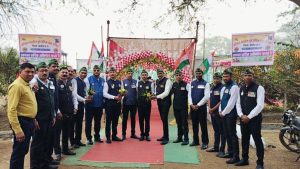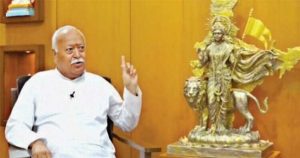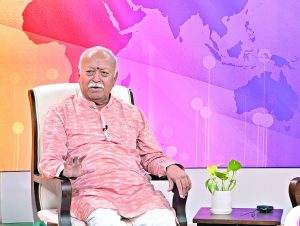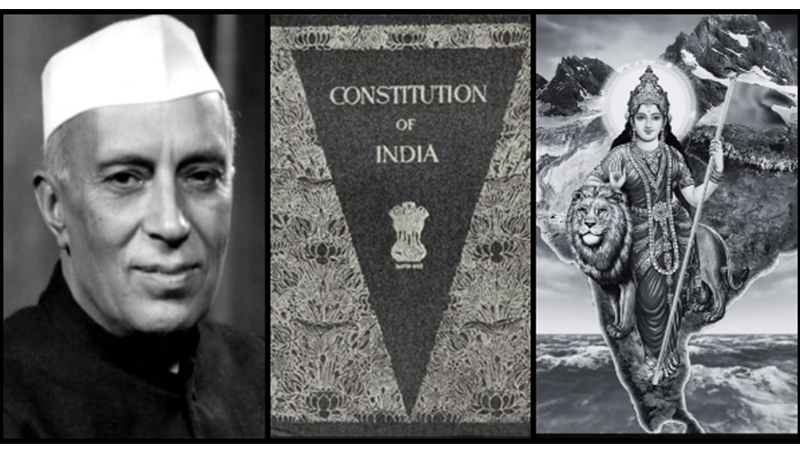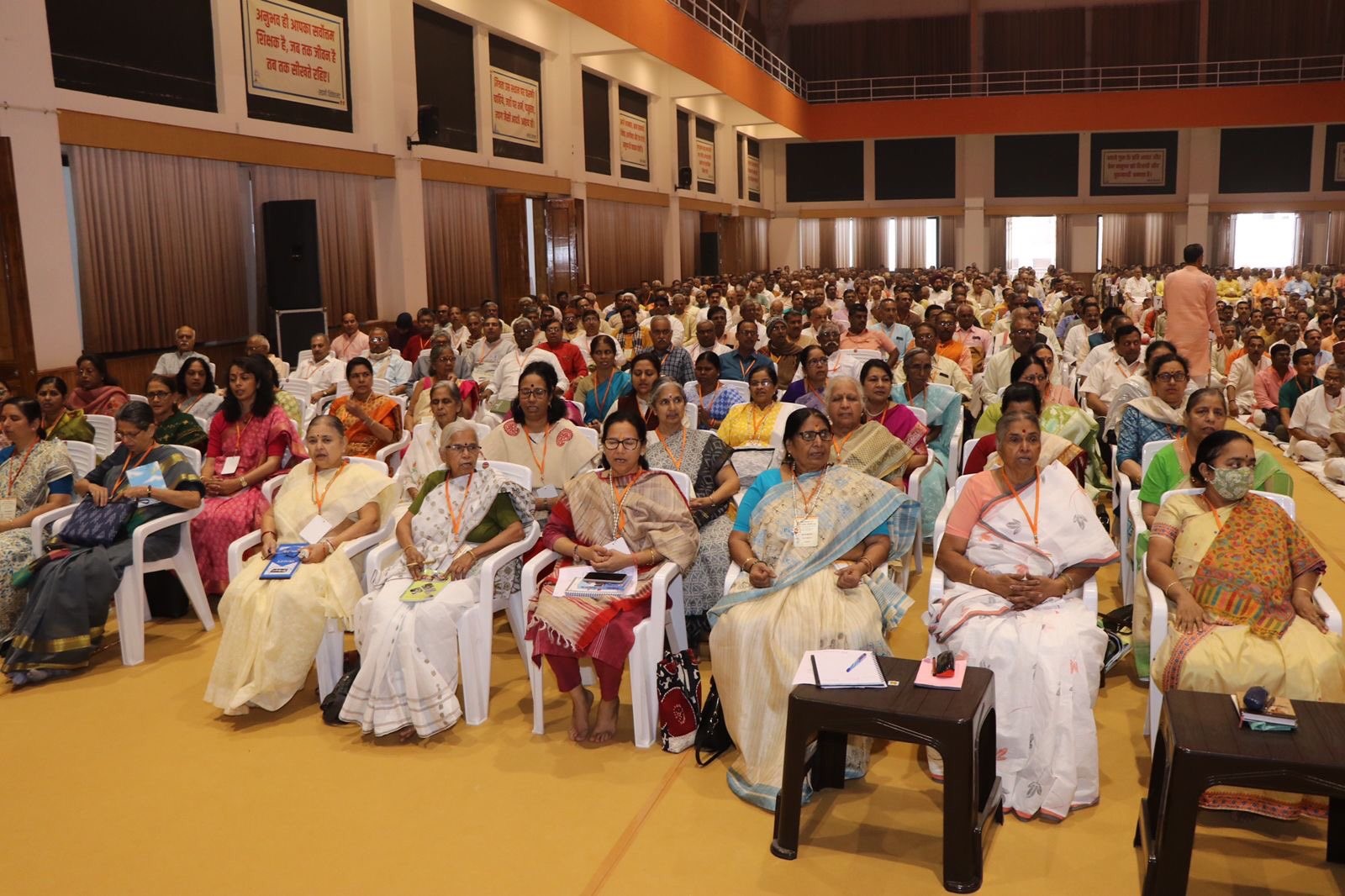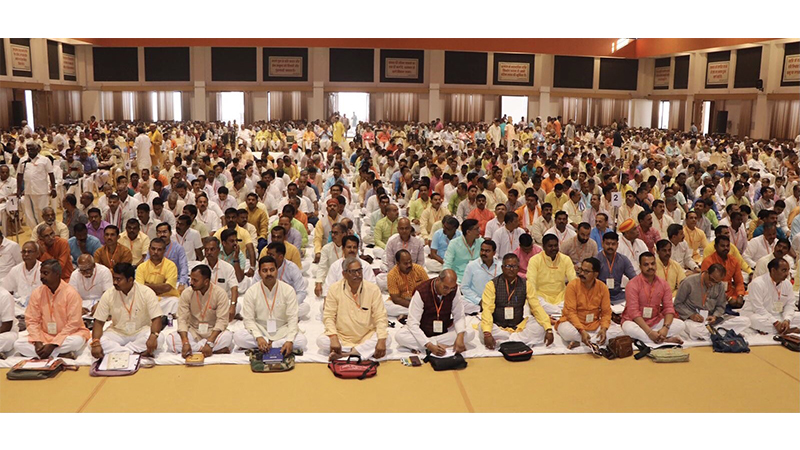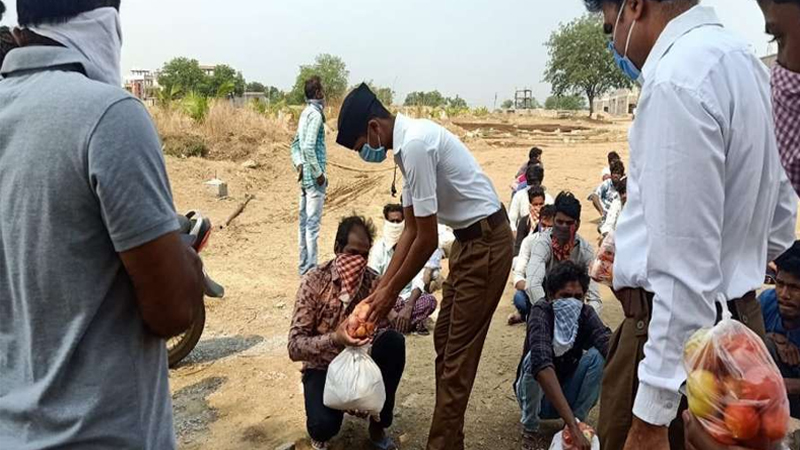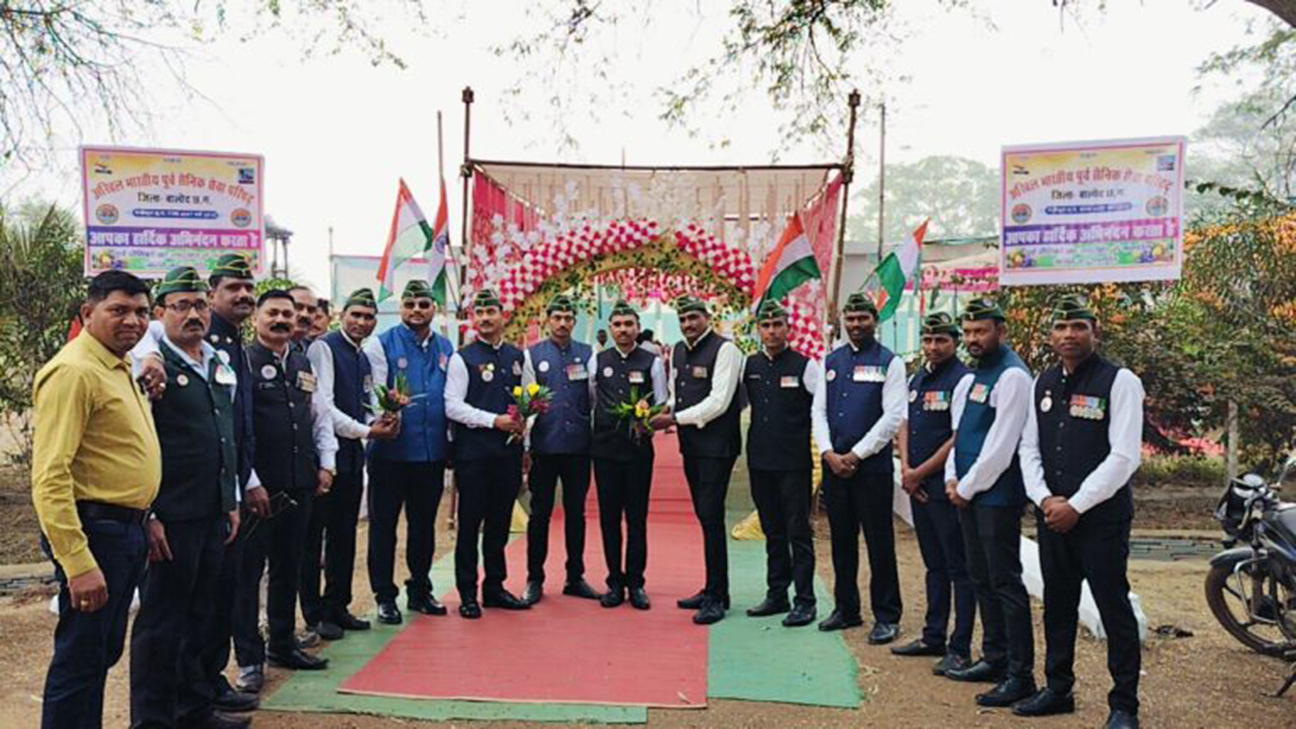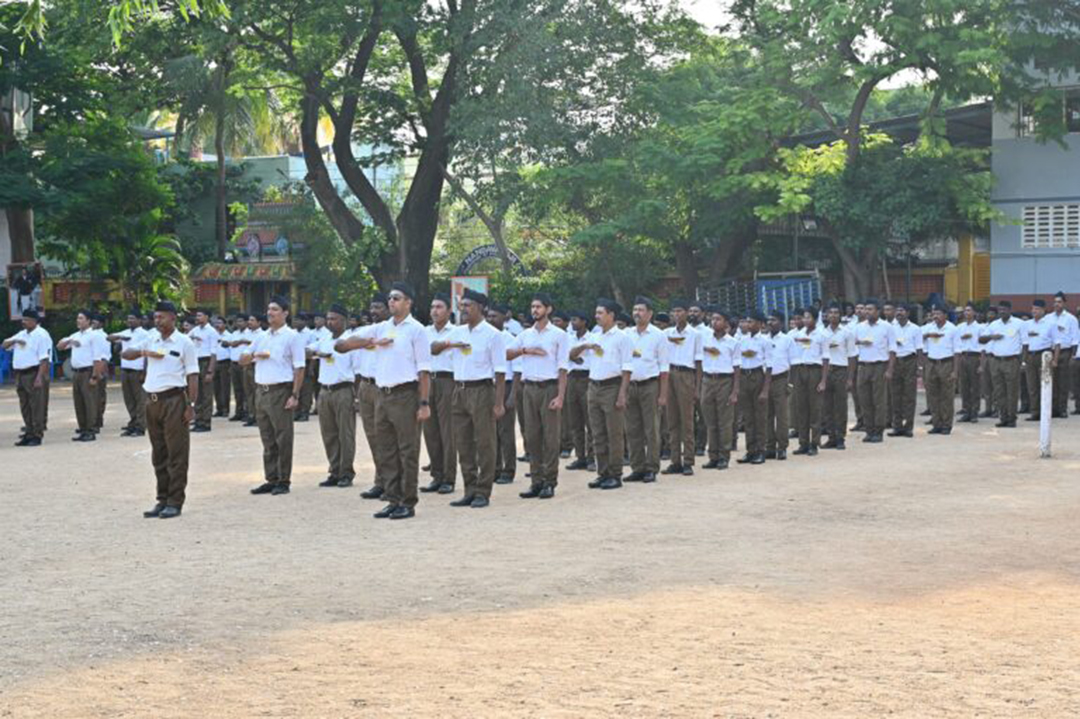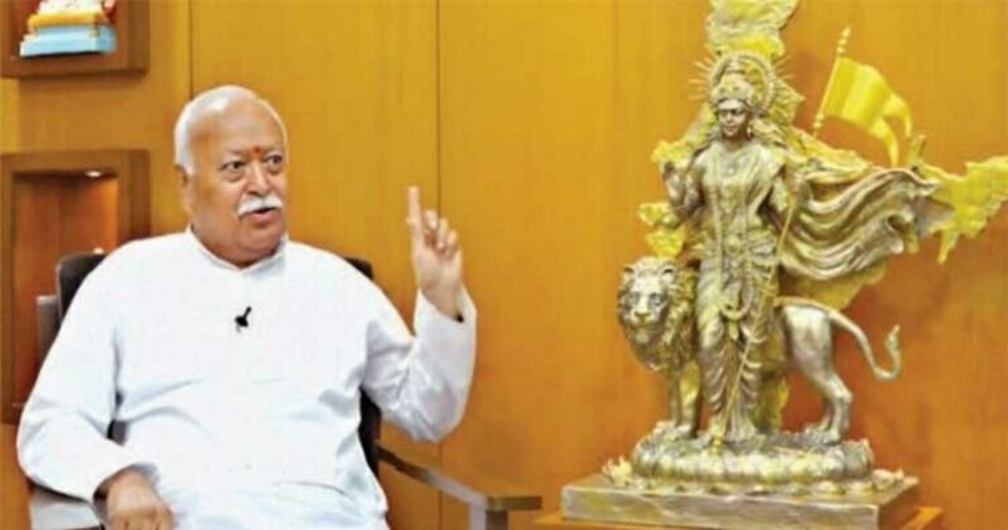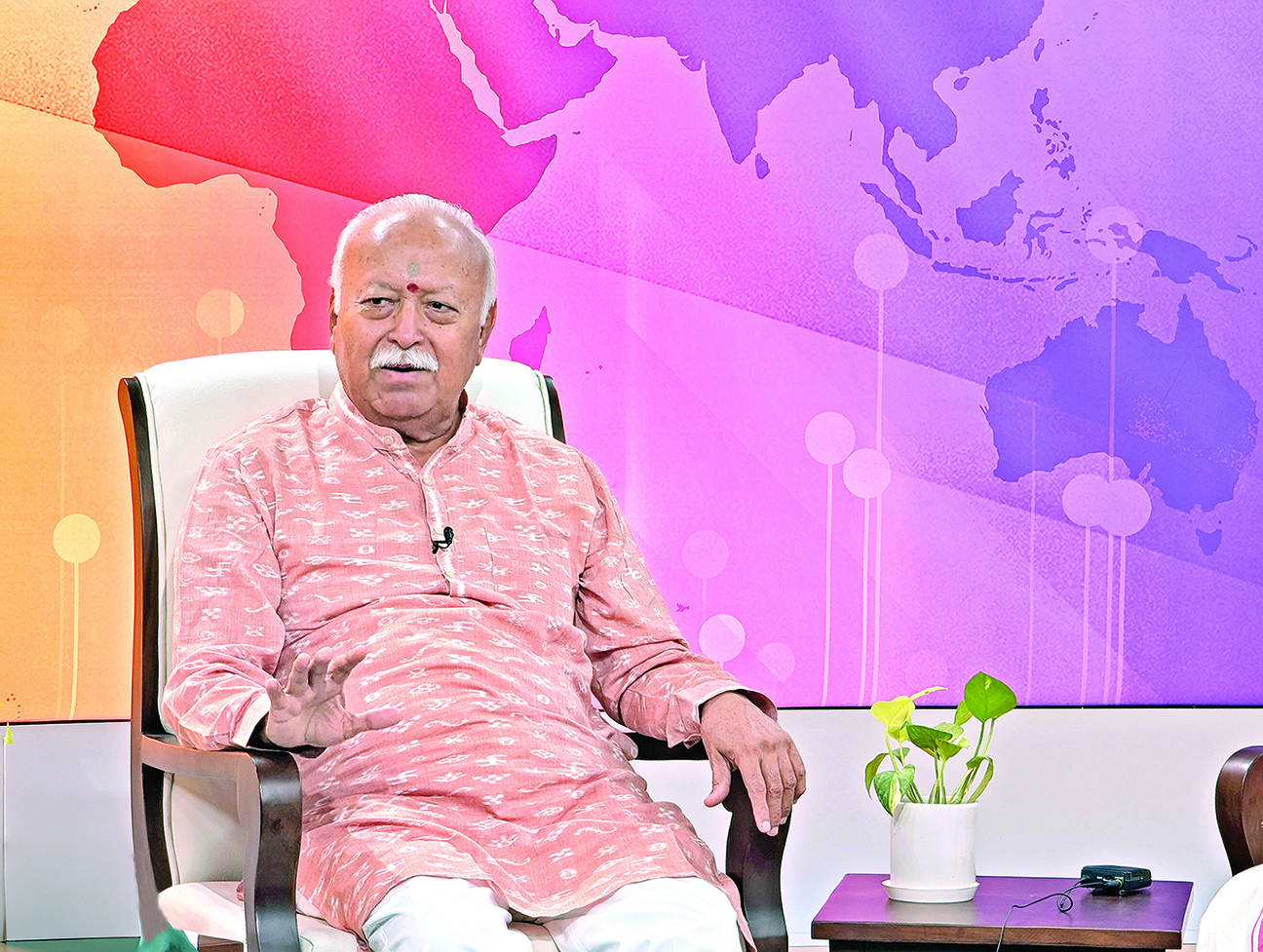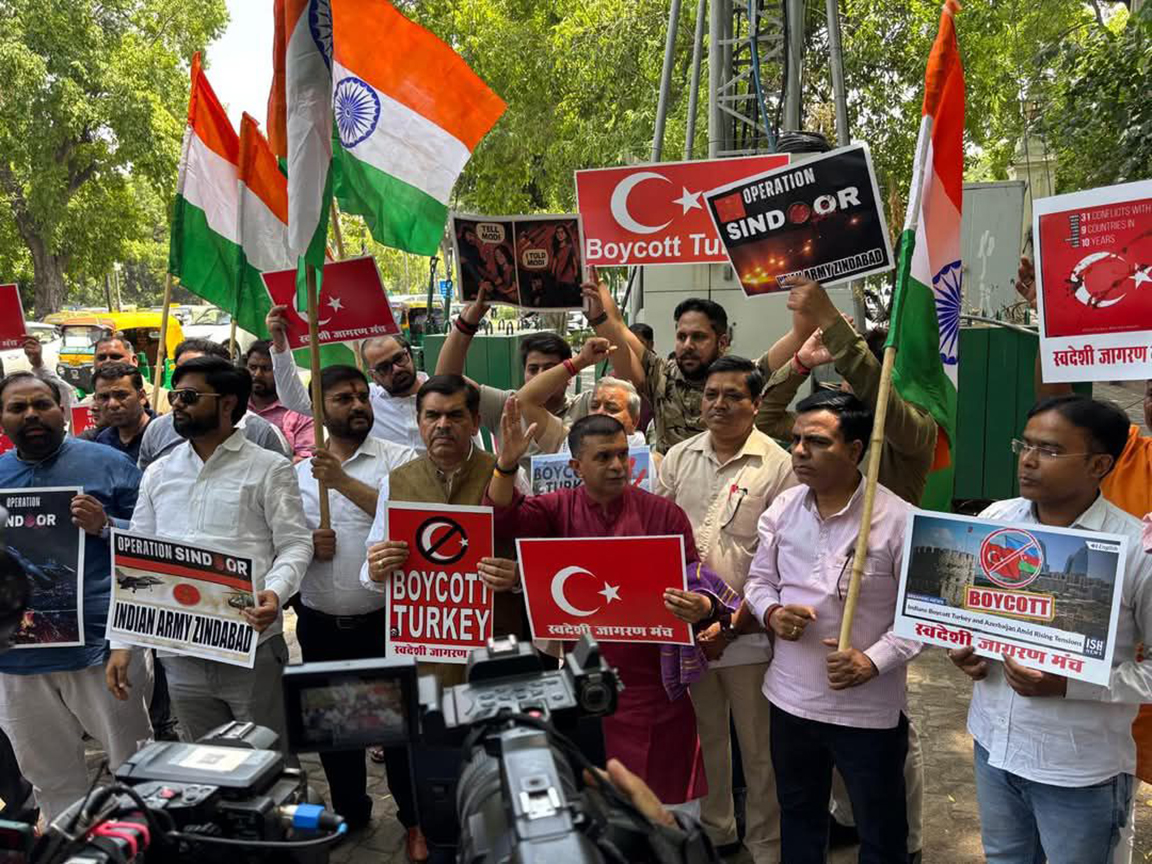Rajju Bhaiya: The Fourth RSS Chief – A Brief Biography
Updated: February 4, 2023 5:57
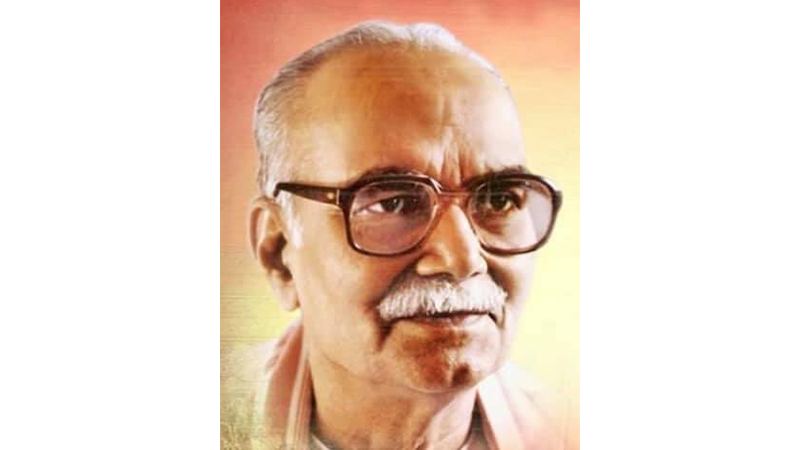
On July 19, 2003, Swami Chinmayananda Union Minister of State of Home Affairs in the Atal Behari Vajpayee-led NDA government wrote in English daily The Pioneer, “I was to learn of the sad demise of Rajju Bhaiya on July 14, 2003. It was not easy for me. The way he discharged his important responsibilities as a teacher, Pracharak, and RSS Sarsanghchalak, with straightforwardness and simplicity, and inspired crores of Indians for a long time, will always be remembered. As an individual, many of my emotional memories are linked with him. Today it seems quite expedient that while paying my homage to him, I should share my experiences with the public.”
Swamiji has summed up the long and fruitful life of Rajju Bhaiya very well in this obituary. Prof. Rajendra Singh, popularly called Rajju Bhaiya, was born in Bulandshahar, Uttar Pradesh on January 29, 1922. His father Balbir Singh was the first Indian to be selected for the Indian Engineering Service.
Rajju Bhaiya received his primary education in Nainital; later, he studied in the Allahabad University. He was a student of Physics and Atomic Science was his special subject. His post-graduation answer papers were checked by Indian Nobel Laureate Dr. C.V. Raman
It is said that Dr. Raman was so impressed with his answers that he invited him to do research under him. Meanwhile, he also received an invitation for the appointment to the post of lecturer. Instead of accepting the proposal of research, he accepted the post of lecturer and taught in the University of Allahabad up to 1965. In 1966, he became a Pracharak of the RSS.
Rajju Bhaiya always remained detached from all materialistic pleasures and, therefore, wanted nothing for himself. He used minimum possible clothes. Due to his nature, his father got a house constructed for him at Civil Lines, Allahabad, but he donated it to an educational institution, Saraswati Shishu Mandir.
It is also said that as his father and family members were probably under the impression that Rajju Bhaiya would donate whatever would be given to him for one of the social organisations, so he was not given any share of his paternal property.
According to Swami Chinmayananda, “He (Rajju Bhaiya) always kept aloof from his family. In Allahabad he lived in a room of the same Shishu Mandir. He spent most of his life in the offices of the Sangh. He was neither an account holder in any bank nor did he own even an inch of land. Simplicity of his nature and cordiality to everyone made him a man of his own style. In spite of his sincerity and complete dedication to the Sangh, he was liked by a large number of people in political parties. Working for the prestigious post of Sarsanghchalak, he was always cordial to all. Though physically he became sick, it never had any effect on his mind and intellect. He remained active till he was alive. He was always a supporter of education, Seva, Samarvata and harmony of thoughts. That is why, all the decisions taken by him as Sarsanghchalak helped the Sangh to widen its scope. His liberal thinking was widely supported. In spite of being a scholar of physics, his expression was always lucid.”
Swami Chinmayananda recounts a very interesting personal experience, “During the Ayodhya movement in 1989, when we were arrested by the Mulayam Singh Government, Rajju Bhaiya, Mahant Avaidyanath and I were kept in the guest house of Jim Corbett Park. Though (Mulayam Singh) Yadav had made high-level arrangements for the arrested persons, Rajju Bhaiya used to wash and dry his clothes himself and keep them under his pillow so that they would need no ironing. Being diabetic, he had to take insulin, but he used to inject it himself. Sometimes he used to prepare tea for everyone. Often in the evening he used to go for a walk. We accompanied him up to a long distance in the forests of Jim Corbett followed by the police. He used to laugh and say, “Brother! We and Mahantji are old and we cannot run. And Chinmayananda can’t leave us alone. Then why are you following us?” When constables said they were following us to protect us from wild animals, he said, “Tigers do live here, but you should know that tigers never attack tigers. All three of us are tigers and we don’t need any kind of protection!”
Rajju Bhaiya was deeply spiritual. He is known to have always kept an edition of Sunderkand Gutka with him. It was presented to him by Brahmachari Prabhu Dattji Maharaj. It had a small picture of Lord Hanuman inside. “On November 30, 1989, when a programme of marching towards the Ram temple was made by the Karsevaks in Ayodhya, inspite of being in Jim Corbett, he advised me and Mahantji to observe a fast and read Sunderkand so that no untoward incident took place there. When the problem of finding a copy of Sunderkand in the forest came up, he took out his Gutka and gave us. We read Sunderkand keeping that picture of Lord Hanuman in front of us which he always preserved,” recalled Swami Chinmayananda.
He was moved by the suffering of others and considered his duty to help them. Another incident recalled by Swami Chinmayananda reveals the emotional aspect of Rajju Bhaiya in this regard. “Once I was travelling with him to Bhagalpur by Vikramshila Express for the inauguration of a Saraswati Shishu Mandir. We were travelling in an AC coach; the lower berths were reserved for us. At night, both of us went to sleep on those berths. In the morning, when I woke up, I saw someone else sleeping on his berth; he was seated in a corner. When I wanted him to tell me about the new guest, he gestured me to remain silent. It so happened that, as per daily routine, when he woke up at 6.00 a.m., he went to the toilet and felt that someone was hanging by the door handle of the coach. It was winter. He opened the door and saw a boy of 9 or 10 shivering in the cold, somehow managing a toehold on the steps. He asked him in and made him sleep on his birth. On the way, he got some milk supplied from somewhere. He woke up the boy, opened the thermos and gave him hot milk to drink. When his followers came to meet him in Patna, he handed over that boy to them with instructions that after asking his address, arrangements be made to send him to his house.”
On the first death anniversary of Rajju Bhaiya, the present RSS Chief Mohanrao Bhagwat, who was Sarkaryavah of the RSS at that time, provided one of the most insightful descriptions in an article titled “Sangh work first, I come later” in the RSS’ weekly publication ‘Organiser’
“The prime qualities that Rajju Bhaiya had were to love all, treat all as his own, take everybody along with him, stay steadfast on truth, tell what is the truth and adopt simplicity. On the basis of these qualities, he had laid some principles of good behaviour, like treating all in the same manner. Without being influenced with age, status, eminence of a person, but treating each person as an individual, was his first principle. Many examples of this nature were seen in his life.
Once a Swayamsevak from a village of Chandrapur district in Maharashtra brought his younger brother for admission to a college in Pune. By then, Rajju Bhaiya had relinquished his duties as Sarsanghchalak to hand them over to Sudarshanji as he himself was recuperating his health at Kaushik Ashram. The Vibhag Pracharak of Chandrapur district had also given him a letter and telephone numbers of some prominent people. The Swayamsevak reached Pune with his brother at 4 o’clock in the morning. He had come to Pune for the first time. On seeing their village outfits and style of talking when seeking the address, a tough-looking goonda began to stalk them. Both the brothers became frightened. They began making frantic phone calls to the local Sangh workers from a nearby telephone booth. Everyone who was contacted would invariably ask, “Where are you? Somehow or the other come to my house or reach the Sangh Karyalaya (RSS Office).” But they were terribly terrified, not knowing what to do. They were not able to tell even from which place they were calling. They even dialled the number of Kaushik Ashram. It was about 5.30 a.m. at that moment. Rajju Bhaiya himself picked up the phone. Without any fanfare, the Swayamsevak spoke out directly, “I am a Swayamsevak from Pipali village of Chandrapur district. I want to talk to Rajju Bhaiya.”
Rajju Bhaiya replied, “Yes. Tell me what do you want, I am speaking.”
The Swayamsevak explained the sequence of events concluding that the goonda was standing nearly and overhearing their talk. He was also preventing them from going anywhere. Rajju Bhaiya replied, “I can’t even walk without any support, what help can I give you?” The Swayamsevak said he knew nothing about the city. Then, literally shouting on the phone, Rajju Bhaiya said, “You try to stall him there. I will send the police right now.” Rajju Bhaiya had said this in such a loud tone that the goon standing close to the phone heard it and quietly slipped away.
Later, the Swayamsevak met Rajju Bhaiya and narrated the entire incident. If you look at it from the practical point of view, then you see that on one side was an ordinary Swayamsevak from an unknown village and on the other side was the former Sarsanghchalak, who was concerned for the Swayamsevak as an individual and not because he was big or small, a city-dweller, a village Karyavah or a Sarkaryavah.
Why did he do this? He told me the following when I became Sarkaryavah. He said, “All people are basically nice. One should deal with every person by believing in his goodness. Anger, jealousy, etc. are offshoots of his past experiences, which affect his behaviour. Primarily, every person is nice and everyone is reliable. We should accept this when dealing with people.”
At least two to three times he told me that anger never proved helpful. He even said that during his work in the Sangh, he became angry twice or thrice and all the times he suffered some loss; gained nothing. I feel that to exercise control over one’s anger and behaviour, one has to keep a well-balanced mind and this he had achieved. The capacity to treat all persons in the same manner and consider all people good and reliable helped him take many people along with him. He never mentioned his difficulties; he remained engrossed in Sangh activities.
A few days ago, I went to attend a meeting of the Vishwa Hindu Parishad. During an informal discussion, Acharya Dharmendraji told me that once when Rajju Bhaiya was in Mumbai, he too happened to be there. When Acharya Dharmendraji went to meet Rajju Bhaiya, the latter was having his breakfast. The meal was so spicy that only one look at his face conveyed everything to Dharmendraji, who could not help remarking, “Rajju Bhaiya, why are you swallowing this poison? What pleasure are you deriving from eating so much of chilies in the food?”
Then Rajju Bhaiya opened his mouth to reveal his tongue. There were boils on his tongue. Acharya Dharmendra suggested him to ask for something else, like porridge for instance.
But Rajju Bhaiya replied, “No, a very old Swayamsevak has brought this meal for me with great love; that’s why I am eating it.” This shows that Rajju Bhaiya was more concerned about the Swayamsevak than for his own discomfort
Once Rajju Bhaiya came to Nagpur on a short tour. He was Sarkaryavah at that time and I was a Pracharak in Nagpur. Normally, when any Adhikari comes to Nagpur, his itinerary is chalked out for a continuous stay of two to three days. Hence, about five to six programmes were arranged for him to attend daily. That day, after attending his morning schedule, he reached the Sangh Karyalaya (RSS Office). I was accompanying him to escort him to his room when my hand inadvertently touched his hand. I felt as though I had touched the burning amber. I immediately took hold of his hand and felt his body burning with fever. I said, “You have temperature.” He replied, “Don’t worry; it has been continuing since the past two-three days.”
I said, “No, No, the schedule…”
He cut me short, “No, don’t cancel the programme. I have to talk while sitting; it would be no strain on the body. I am able to walk and as I am eating food too, I can surely talk.” He attended all the programmes.
He would keep himself in the background and the ideal in the forefront. This was the second prime quality of his personality. In the modern times, I think these two qualities are very essential for every Swayamsevak.
Once in a semi-conscious state, Rajju Bhaiya had said, “The Sangh work is increasing; need is for increasing the tempo. Work can be expedited only when each Swayamsevak gives supremacy to Sangh work. Let him be a student, a householder or an ascetic, every Swayamsevak has to accept that Sangh work comes first, while the rest is secondary. When such a situation is reached, the momentum of Sangh work will get a fillip.” Rajju Bhaiya set the example with his own life: Sangh work first; I come second.
Secondly, we all should forever remember Rajju Bhaiya’s moolmantra (watch-word): All people are primarily good, all are reliable to work for bringing unity in the society.
(Source – Anand Arun, Know About RSS, Prabhat Prakashan, Second Edition)
